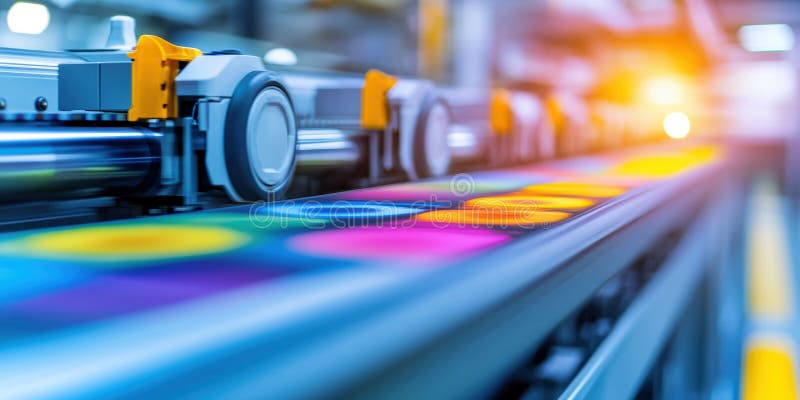In the world of publishing, the art of offset printing has long been celebrated for its precision and efficiency, especially when it comes to producing technical manuals. Whether you’re crafting a detailed instruction guide or a comprehensive engineering manual, understanding the nuances of this printing technique is crucial. This article will explore how offset printing plays a pivotal role in delivering high-quality technical documentation.

Understanding Offset Printing
Offset printing is a widely used printing technique that involves transferring an inked image from a plate to a rubber blanket and then onto the printing surface. It is known for its ability to produce consistent and high-quality prints, making it ideal for technical manuals that require precision.
Unlike digital printing, offset printing offers superior color accuracy and sharper images. This makes it the preferred choice for magazines and other detailed documents.
The Importance of Technical Manuals
Technical manuals are essential tools in various industries. They provide detailed instructions and information necessary for the operation, maintenance, and repair of equipment. As such, clarity and accuracy in these documents are paramount.
Key Features of Technical Manuals
- Detailed instructions
- High-quality diagrams and images
- Clear and concise language
Why Choose Offset Printing for Technical Manuals?
There are several reasons why offset printing is the preferred method for producing technical manuals:
1. Superior Print Quality
With offset printing, you get sharp, clean images and text. This is critical for technical manuals where precision is essential.
2. Cost-Effectiveness for Large Runs
For large volumes, offset printing is more cost-effective than digital printing. This makes it an excellent choice for producing multiple copies of a manual.
3. Versatility in Printing Surfaces
Offset printing can be used on a variety of surfaces, including paper, cardboard, and even plastic. This versatility is beneficial when different types of manuals or covers are needed.
Steps in the Offset Printing Process
Understanding the process of offset printing can help in appreciating its benefits:
1. Prepress Process
This involves creating printing plates with the images and text to be printed. The process ensures that every detail is captured accurately.
2. Plate Creation
The plates are used to transfer the image onto a rubber blanket, which in turn prints the image onto the paper.
3. Printing
The actual printing process involves running the paper through the press where the inked image is transferred from the plate to the paper via the rubber blanket.
4. Finishing
This stage involves cutting, binding, and any other processes needed to create the final product.
Challenges in Offset Printing
Despite its advantages, there are some challenges associated with offset printing:
1. Initial Setup Costs
The setup costs for offset printing can be higher than digital printing, making it less economical for smaller print runs.
2. Longer Turnaround Times
The process of creating plates and setting up the press can lead to longer turnaround times compared to digital printing.
Offset Printing vs Digital Printing
While both have their places in the printing world, understanding the differences can help in making an informed decision. Read more about this comparison here.
Advantages of Digital Printing
- Quicker setup and turnaround
- Cost-effective for small runs
- Flexibility in design
Applications of Offset Printing in Various Industries
Beyond technical manuals, offset printing finds applications in various industries, including newsletters, business cards, and graphic design.
Future of Offset Printing
The future of offset printing looks promising with advancements in technology. These innovations promise to enhance the quality and speed of the printing process, making it even more efficient.
Conclusion
Offset printing remains a vital component in the production of technical manuals. Its ability to deliver high-quality, precise prints makes it an indispensable tool in industries where accuracy is crucial.

FAQs
1. What is the main advantage of offset printing?
The main advantage of offset printing is its ability to produce high-quality and consistent prints, especially for large volumes.
2. Is offset printing better than digital printing?
It depends on the project. Offset printing is excellent for large runs and high-quality needs, while digital printing is better for smaller runs and quick turnarounds.
3. Can offset printing be used for small print runs?
While it can be used, offset printing is generally more cost-effective for larger print runs.
This article contains affiliate links. We may earn a commission at no extra cost to you.







